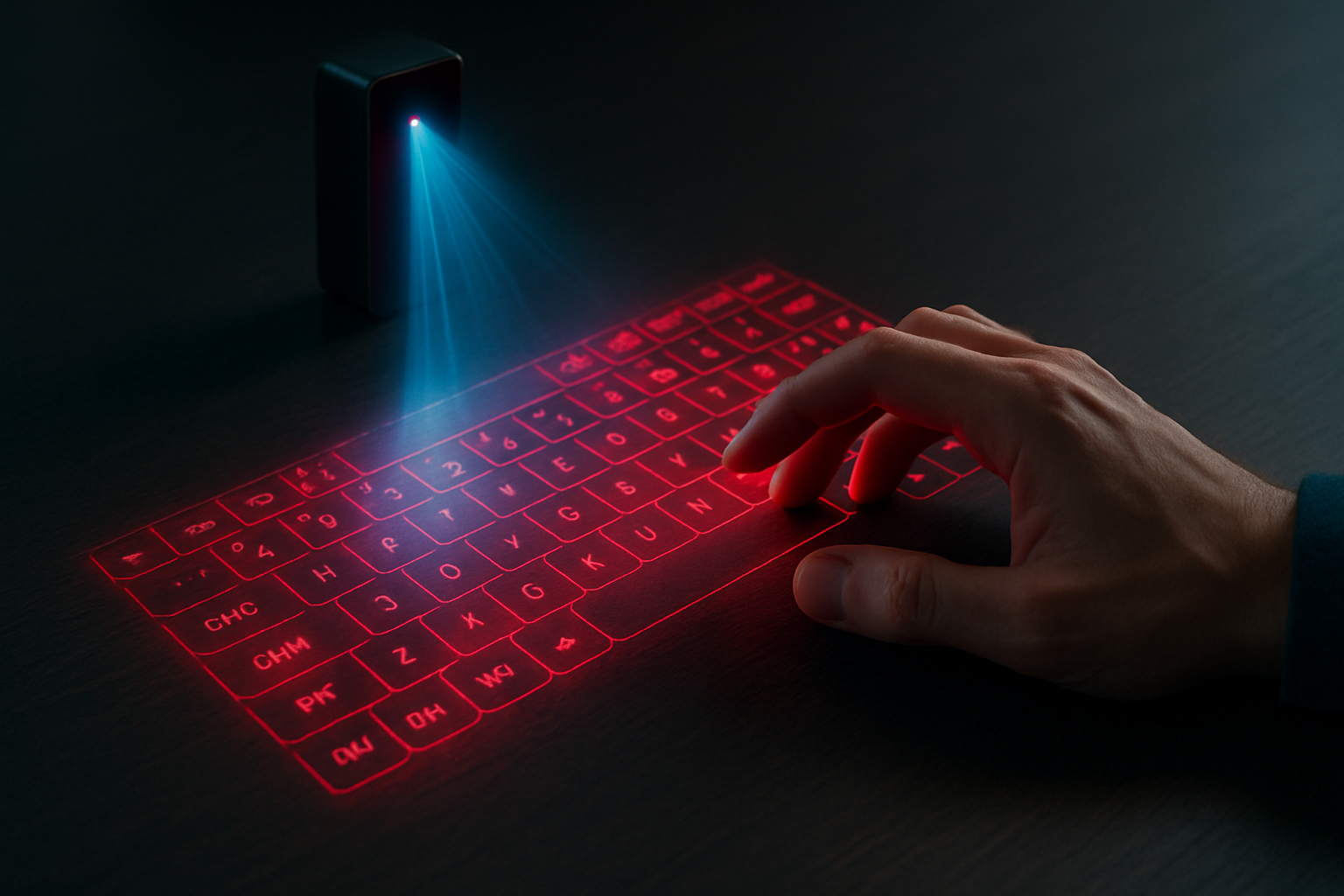Holographic Keyboards: Typing on Thin Air
In a world where technology continuously pushes the boundaries of what's possible, holographic keyboards are emerging as a fascinating frontier in human-computer interaction. These futuristic input devices project a virtual keyboard onto any flat surface, allowing users to type without physical keys. As we delve into this cutting-edge technology, we'll explore its potential to revolutionize how we interact with our devices and the challenges it faces in becoming mainstream.

The Science Behind the Magic
At its core, holographic keyboard technology relies on a combination of projection and sensor systems. A small projector casts the image of a keyboard onto a surface, while infrared or laser sensors detect the position of the user’s fingers. When a finger “presses” a virtual key, the system interprets this as a keystroke and sends the corresponding input to the connected device.
The technology isn’t entirely new—early patents for similar concepts date back to the 1990s. However, recent advancements in miniaturization, projection quality, and sensor accuracy have brought holographic keyboards closer to practical reality.
Current State of the Technology
While not yet ubiquitous, holographic keyboards are no longer just prototypes. Several companies have brought products to market, with varying degrees of success. These devices typically connect to smartphones, tablets, or laptops via Bluetooth, offering a portable alternative to carrying a physical keyboard.
Early adopters praise the novelty and space-saving aspects of holographic keyboards. However, reviews often highlight the learning curve associated with typing on a non-tactile surface. The lack of physical feedback can lead to decreased typing speed and accuracy, at least initially.
Challenges and Limitations
Despite their futuristic appeal, holographic keyboards face several hurdles on the path to widespread adoption. One of the most significant challenges is replicating the tactile feedback of physical keys. Without the sensation of key presses, many users find it difficult to type accurately or maintain their usual typing speed.
Lighting conditions also play a crucial role in the effectiveness of holographic keyboards. Bright ambient light can wash out the projected image, making it difficult to see the keys. This limitation restricts their use in outdoor settings or well-lit environments.
Battery life is another concern, particularly for portable projectors. The energy required to maintain a bright, clear projection can quickly drain power sources, potentially limiting the practicality of these devices for extended use.
Potential Applications and Market Impact
While holographic keyboards may not replace traditional input methods entirely, they hold promise in specific niches. For professionals who frequently work in tight spaces or on the go, such as field researchers or journalists, a compact holographic keyboard could be a game-changer.
The technology also has potential in sterile environments like hospitals, where physical keyboards can harbor bacteria. A projection-based system could be easily sanitized between uses, reducing the risk of contamination.
In terms of market impact, the global holographic display market, which includes holographic keyboards, is projected to reach $11.65 billion by 2028, according to a report by Grand View Research. This growth is driven by increasing demand for innovative display technologies across various sectors, including automotive, healthcare, and consumer electronics.
The Future of Holographic Input
As holographic keyboard technology continues to evolve, we can expect improvements in accuracy, tactile feedback simulation, and energy efficiency. Some researchers are exploring the use of ultrasonic waves to create the sensation of key presses in mid-air, potentially solving the tactile feedback issue.
Integration with augmented reality (AR) systems could also open up new possibilities. Imagine a holographic keyboard that appears within your AR glasses, allowing you to type on any surface without the need for a separate projector.
A Glimpse into Tomorrow’s Typing
Holographic keyboards represent a fascinating intersection of cutting-edge optics, sensor technology, and human-computer interaction. While they may not be ready to replace your trusty mechanical keyboard just yet, they offer a glimpse into a future where our input devices are as fluid and adaptable as the digital worlds we create with them.
As with any emerging technology, the true potential of holographic keyboards will likely be realized through continued innovation and unexpected applications. Whether they become a niche tool for specific use cases or a mainstream input method, holographic keyboards are pushing the boundaries of how we interact with our devices, one virtual keystroke at a time.





